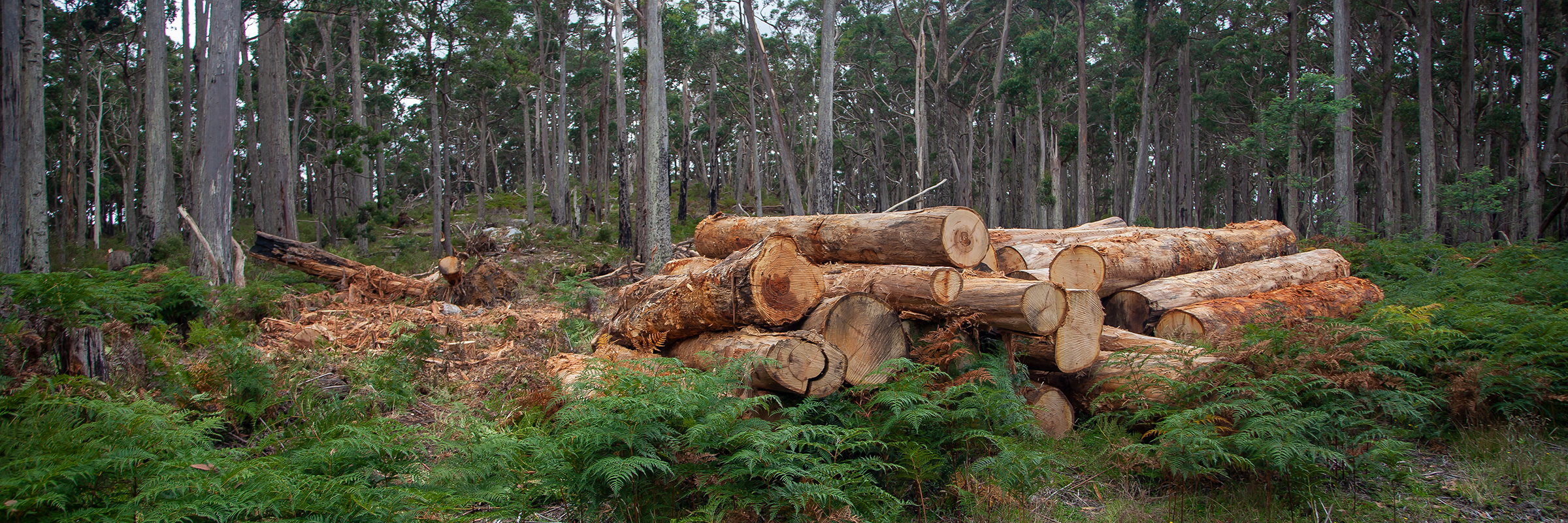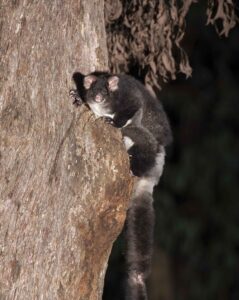Fire management is serious and truly complicated.
It needs to protect lives and look after our natural living web. At the moment the bushfire ‘Code’ used to manage fire on Victoria’s public land is hard to understand.
On top of that, there’s no transparency on how our land managers use it. This has led to questionable, poorly thought-out operations. And native wildlife and their homes are taking the brunt. Hundreds of precious hollow-bearing trees destroyed. Habitats razed and fuel loads increased.
Your decision-makers are reviewing how they manage fire. It’s time we crack the ‘Code’.
Give your feedback on the Code
Your feedback on the draft Code of Practice for Bushfire Management on Public Land 2024 is important. It will shape the new Code.
- The survey is very short, with only eight check boxes. It questions the Code’s effectiveness. We have no confidence in its current form, as seen in case studies below. The Code does not balance nature and safety, neither does it meet nor state its objectives. It is unclear and unsatisfactory.
- There’s only one comment field. Below is a concise list of what would improve the Code that can be used to put into this field. You’re welcome to us these as a guide. Please note that the ‘further comment field’ has a limit of 1000 characters. Make sure you focus on the issues that matter most to you.
Complete the brief online survey
The survey closes 11:59pm, Sunday 3 November 2024.
How can the Bushfire Code better protect wildlife, landscapes and community?
The Code needs to set clear goals and accountability for managers fire (outside of emergency periods). This includes:
• Independent surveys: Before work begins, on-the-ground surveys should identify important natural features. The findings should guide planning and operations. If hazardous trees need to be treated or removed, an independent animal spotter should be on-site to guarantee wildlife safety.
• Nature law referrals: Assess large fire operations involving nationally-listed threatened plants, animals and communities under national nature laws. The process should be timely and transparent.
• Open assessment and community involvement: Evaluate impacts on state-listed threatened plants, animals and communities from broad programs down to specific sites. Include meaningful community consultation, use the latest scientific data, and adjust practices based on findings.
• Binding wildlife protections: Establish guidelines for all wildlife and habitat-specific protections, with clear mitigation measures. This includes hazardous trees, inline with the Protecting our living legacies report. Ideally, regulations should be as detailed as NSW’s Bush Fire Code. The state’s big tree protection policy should be a clear, enforceable rule (trees greater than 2.5 metres in diameter are retained).
• Independent oversight body: Move the Conservation Regulator out of the fire management department (DEECA) and into either Environment Protection Authority Victoria or the Department of Justice. This independent watchdog would monitor projects, enforce nature protection, look at new scientific evidence, and run genuine community consultation without conflicts of interest.
• Real enforcement of vegetation laws: Apply Crown Land procedure when destroying native vegetation on public land, with clear ‘avoid, minimise and offset provisions‘. These must be applied transparently and meaningfully.
Examples of nature-damaging bushfire operations:
• Strategic fuel beak construction and maintenance, Yarra Ranges National Park
• Storm clean up, Dandenong Ranges National Park, Silvan Reservoir, Wombat and Cobaw forests
• Post-fire salvage and post-fire hazardous tree removal
• Hazardous tree removal, along roads, in strategic fuel breaks, and in preparation for prescribed burns
• Planned burn impacts on threatened plants and animals
Key issues and solutions
Lack of clarity: The Bushfire Code doesn’t provide clear, detailed rules about what Forest Fire Management Victoria (FFMV) can or can’t do. What does ‘undertaking works that facilitate access to public land and the recovery of natural, cultural and built assets’ really mean?
The Code talks about how to “maximise resilience of native ecosystems to fire”. The trouble is, there’s a huge disparity in how reilience is defined and measured. If resilience is the goal, the code must set evidence-based benchmarks on how nature resists and recovers from disturbance. Minimum and maximum times between fires to keep habitat healthy (Tolerable Fire Intervals), is one example.
Lack of transparency: The Secretary of the Department of Energy, Environment and Climate Action (DEECA) carries out work to prevent and suppress bushfires. Victoria’s Forests Act (1958) requires DEECA to do this across state forests, national parks and protected public land.
This makes sense when battling wildfire in the depths of summer. But this power can be abused. What about in the depths of winter or when large habitat trees are felled and threatened wildlife killed or injured? What and who is guiding the decisions made?
The Bushfire Code itself says it ‘is not regulatory in nature and does not prescribe the operational detail for how the Department will achieve the Code’s objectives’. We see this lack of transparency in fire operations play out in our forests.
Case Study: Yarra Ranges Strategic fuel break
Hundreds of hollow-bearing trees have recently been removed as part of ‘fire management’ operations. Many more are planned for removal within habitat critical for the survival of iconic threatened wildlife like the Critically Endangered Leadbeater’s Possum and Endangered Greater Glider.
Citizen science groups have thoroughly surveyed the latest break targeted for logging – the Forty Mile Break north of Noojee. They documented trees FFMV identified as hazardous and marked for removal, indicated by a pink spray-painted symbol on the base of the tree. At least 480 trees were recorded including over 100 hollow-bearing trees. This includes trees citizen science surveyors identified as active denning/nesting trees for endangered Greater Gliders. Endangered animals are living inside these trees marked for removal.
Hazardous Tree assessments from independent arborist Melbourne Treecare cast serious doubt on FFMV’s current policy and processes. All 16 trees were found to have a risk of ‘one in a million’ for harming humans – a broadly acceptable level of risk – with attributes that warrant a high retention value. The arborist found that none needed to be felled or removed, recommending pruning works for six.
To date, FFMV has not referred these logging operations to the Federal Government for an assessment of significant impacts under the Environment Protection & Biodiversity Conservation 1999 (EPBC Act). On 15 May, citizen scientists have found a dead Greater Glider near a felled habitat tree. The tragedy? We’d repeatedly warned state and federal ministers that gliders are living in the trees.
Case Study: Dandenong Ranges National Park and Silvan Reservoir
Alarm bells were raised in December 2022. FFMV notified locals and VNPA of a 100 hectare work zone within the national park, and in the closed Silvan Water Catchment. These areas were hit by a severe windstorm in June 2021.
FFMV planned to remove 40 to 60 per cent of fallen logs in the area before Christmas 2022. Controversial state loggers VicForests were to do the work, with profits from selling the trees split between them and FFMV.
Log haulers, bulldozers and other heavy machinery would eneter off-track forested areas. These 20 tonnes machines would damage and compromise the recovering forest and surviving storm-fallen trees.
The full works have been delayed for years, but some are underway.
Helpful resources
- VNPA submission to the draft Code of Practice for Bushfire Management on Public Land 2024
- Code of Practice for Bushfire Management on Public Land
- Code of Practice for Timber Production 2014
- Alarm at Dandenong Ranges fire logging
Why get involved?
- Express support for evidence-based protection of Victoria’s wildlife
- Learn about the issues facing our natural places and web of life
- Positively impact the decisions being made on your behalf
- Reinforce and illuminate collective concerns
Next steps: A summary of the feedback will be published on Engage Victoria early in 2025.


